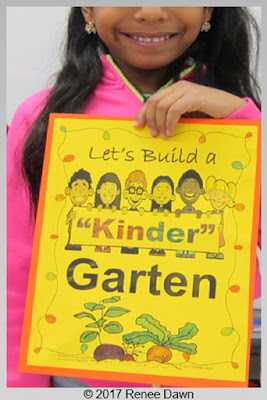- Respect means you see, like or admire, and care about someone, including yourself.
- Rapport means you understand other people's feelings or ideas, and communicate well with them.
The Danielson Teacher Evaluation
Rubric—the gold standard for teacher evaluations—puts classroom culture at the
top of Domain #2. Component 2a,
Creating an Environment of Respect and Rapport, is a crucial part of The
Classroom Environment.
Examples of Proficiency (Level 3) in this domain are:
1) Students and teachers are respectful with
no need for the teacher to intervene or correct students (Kids self-correct and
kindly correct each other; “I think you might have meant…”)
2) The teacher connects with individual
students, and responds to each child uniquely (The teacher is not rote or deadpan;
“Way to go, girlfriend!” “I’m lovin’
it!” "Thanks for sharing that with us!")
3) Students participate willingly and
confidently (Many hands are raised to answer)
4) Kids offer assistance to their peers, for
instance in thinking through an answer (“Do you think this…or that?”)
5) Kids engage in small group talk or work,
productively and respectfully (Kids realize they don’t have to be best friends
to be civil)
6) Kids are attentive to the teacher (Eyes
are focused)
7) Many hands go up to answer (Kids wait for
the full question before raising their hands)
8) The teacher kneels, sits on the floor or
sits beside a student (During turn and talk, the teacher moves to various groups
and responds)
9) Kids listen to and help each other
patiently (Kids take a subtle, silent, deep breath
to help them relax)
10) Kids accept help from each other
graciously (“Thank you,” “I like your
ideas.”)
Examples of Distinguished mastery (Level 4) are:
1) Kids take the initiative to show respect
for others (“I’d
love
to hear what you think about that!”)
2) Kids show respect for high-level work
(“Wow that was interesting!
I love the way you…”)
3) Kids show respect for peers’ efforts (“I
like his ideas, but I might disagree if…” or, “I respectfully disagree,
because…”)
4) Kids participate without fear of
put-downs (“I’m not sure about this but I was thinking…”)
5) The teacher explicitly encourages kids’
efforts and achievements (“Hey, I see light bulbs going off in your head!”)
6) Kids subtly encourage good behavior (A
kid silently smiles and puts a finger on his lips if someone is talking out of
turn)
7) The teacher and students make references
to kids’ lives and interests outside of school (“The character in that story
reminds me of you, because you both love cats so much!”)
8) A range of emotions are tapped, including humor, empathy, and pensiveness. (“Let's take a moment to mind-meld with that idea!”)
Summing Up The Importance of Respect and
Rapport:
- Classroom culture or tone is the glue that holds the classroom together.
- A positive tone will smooth over a multitude of little blips or errors.
- Kids learn about respect and rapport by talking about it frequently.
- The class can practice using kind phrases till they become second nature.
- The teacher should praise respect when she notices it in books and in kids.
- And above all, the teacher should be a shining example of how respect and rapport can make life more pleasant.
For a detailed look at every part of your perfect lesson, please consider The Perfect Lesson Plan – From Planning to Presentation. It includes insights, checklists, charts, cheat-sheets, tips, scripts, class posters, lesson plans and lesson plan templates to guide you through every step of your observation lesson.
As always, I'm wishing you a very merry classroom, brimming with respect and rapport!





